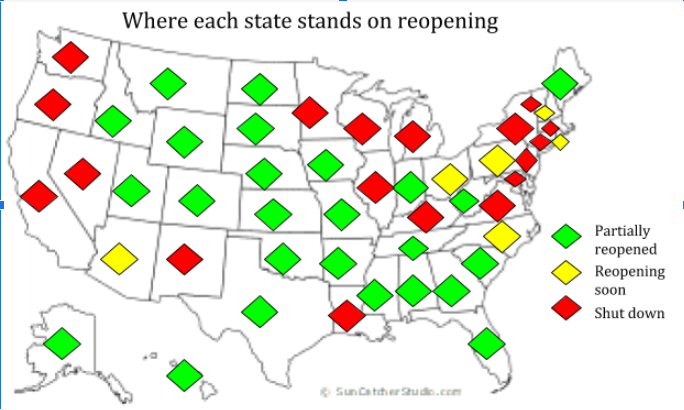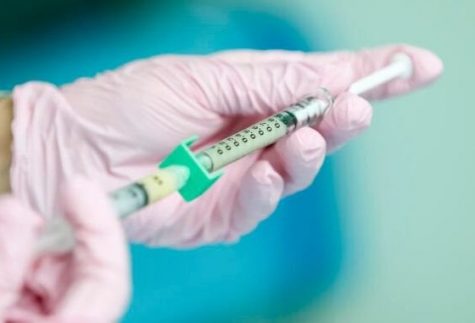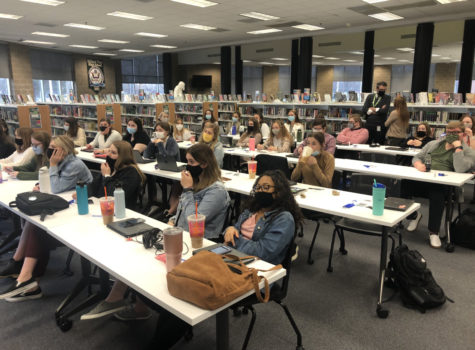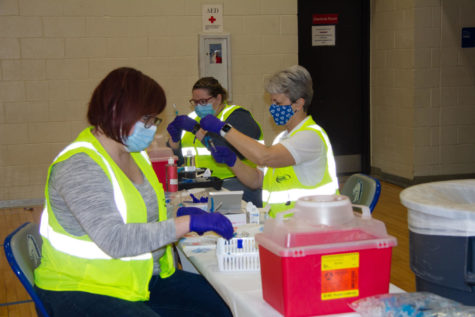Reopening too rapidly?
States begin to open up as COVID-19 cases increase
US outline courtesy of Pinterest
Some states make the way towards reopening while others continue to stay closed down. State officials have to make the difficult decision of what the best option is.
May 11, 2020
After months of quarantine, many people are finally seeing a light at the end of the tunnel with states beginning to reopen certain businesses. For the first time in a while in some states, citizens can attend their places of worship, get a haircut and even dine-in at certain restaurants. More than half of all states are either partially reopening or have plans in place to reopen. However, not one state has met the suggested criteria for reopening.
The guidelines advised by the federal government include a 14-day drop in cases along with the capabilities to conduct increased testing and contact tracing. In Nebraska, houses of worship, personal care, food and drink are among some of the types of businesses that are allowed to reopen with social distancing measures. However, a tracking map in the New York Times shows that new cases continue to be on an increase rather than the suggested two-week drop.
In addition to a drop in cases, more robust testing is also needed for reopening. Without proper testing capabilities, states might not be able to contain new outbreaks as they occur. Many states lack the most basic testing levels suggested by the federal government. An analysis by the Associated Press found that about 40% of states met not even the 2% testing threshold. Most testing now is limited to workers on the frontline and people showing symptoms of COVID-19. However, testing needs to be ramped up to also test asymptomatic people in order to conduct contact tracing. This lack of testing for states that have decided to reopen could cause more shutdowns in the future and new outbreaks of the pandemic as well as the overcrowding of hospitals.
Although no state meets the proper guidelines for reopening, 25 have continued to do so anyway. As people continue to be stuck inside due to stay-at-home orders, anger has boiled over in a lot of places. Protests have broken out in Pennsylvania, California, Michigan and many other states over the quarantine, putting more and more pressure on state officials.
Along with protestors, unemployment claims and a delicate economy are also important considerations for reopening businesses. As of mid-April there had been 22 million unemployment claims according to CNN. With this number on the rise, many business owners are being put in the difficult position of having to see their employees suffer. A woman in Texas recently got arrested for defying orders and keeping her salon open. When speaking to the judge, she said she would not apologize because she could not stand to see her employees struggle financially.
With so many different factors in place, state officials have been put in a difficult position when it comes to reopening. Although some places have been reopened with new health measures in place, it is still imperative that individuals continue to social distance until it is safe to do otherwise.
When in public, it is still necessary for our health care system that everyone keeps six feet of distance from each other and wears masks. Also, washing and sanitizing hands frequently can help stop the spread of germs. Furthermore, until states do meet the proper reopening criteria, only leaving the house for essentials is the most responsible thing to do. While we can’t control what the government does, we can still control our own actions.














